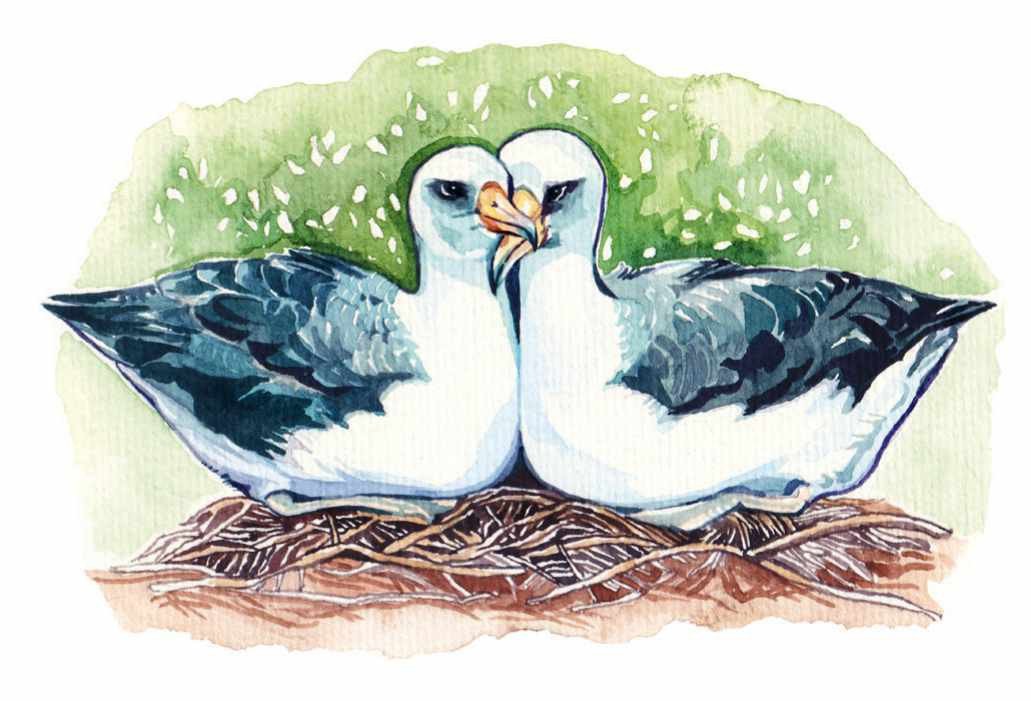LAYSAN ALBATROSS
Lucy Cooke on Hawaii’s seabirds pairing up with the same sex
THE LAYSAN ALBATROSS IS A GREAT example of how looks can be deceiving. Albatrosses are a famous symbol of monogamy – they typically mate with the same bird for life. When Republican First Lady Laura Bush visited Hawaii, she commended the nesting Laysan albatross couples for their lifelong commitments. What no one knew at the time was that many of those committed couples were, to put it anthropomorphically, lesbians.
The colony at Kaena Point, Oahu, has been documented by biologists for over a century, but their unconventional coupling went undetected until 2008. It’s easy to see why – both male and female are all but identical. The only clue that something ‘avant-garde’ was going on was the curious preponderance of nests bearing two eggs.
It is physically impossible for a single albatross to lay a double clutch so these extra eggs were mysterious – until zoologist Lindsay Young decided to check their custodians were indeed male and female. Young ran DNA checks on feathers and discovered, to her great shock, that over a third of the nests were, in fact, female-female. But why?
It turns out these females are pioneers, in every sense of the word. The colony at Kaena Point is new – Laysan albatrosses have only been nesting there since it became protected land. It was forged by offspring from congested colonies on nearby Laysan and Midway atolls.
Young females tend to be the adventurous ones, whereas males remain at their birth colony, which leaves fresh colonies with a shortage of males. Being a single parent is not an option, however. Albatross chicks are uniquely slow maturing and take almost six months to become airborne themselves. During that time parents must tag-team foraging missions as far north as Alaska, while the other sits tight, protecting their noisy but needy investment.

These innovative females have adapted by soliciting another albatross’ husband as sperm donor, then partnering with a female to raise the chick. Although both females may lay a fertilised egg, only one will survive. The reproductive success rate for females in same-sex couples is therefore half that of heterosexual – better than not breeding at all.
Some of these females will eventually switch to an available male. Some remain in same-sex relationships for life. Young introduced me to one couple that have been together for 17 years, raised eight chicks and grandparents to three more. These birds indulge in all the same lovey-dovey preening that heterosexual albatross couples engage in. These same-sex albatross demonstrate the flexibility of sex-roles in nature. They also signify hope. On Midway and Laysan, 95 per cent of the albatross nests are likely to have disappeared by the middle of this century due to rising sea levels. So, these pioneering females, nesting on fresh higher ground, are literally preserving their species.

Catch up with Lucy’s BBC Radio Four three-part series Political Animals

Lucy is a broadcaster, zoologist and author of Bitch: A Revolutionary Guide to Sex, Evolution and the Female Animal.